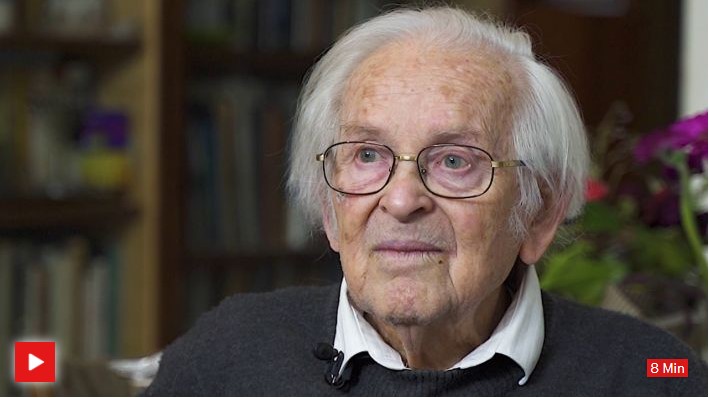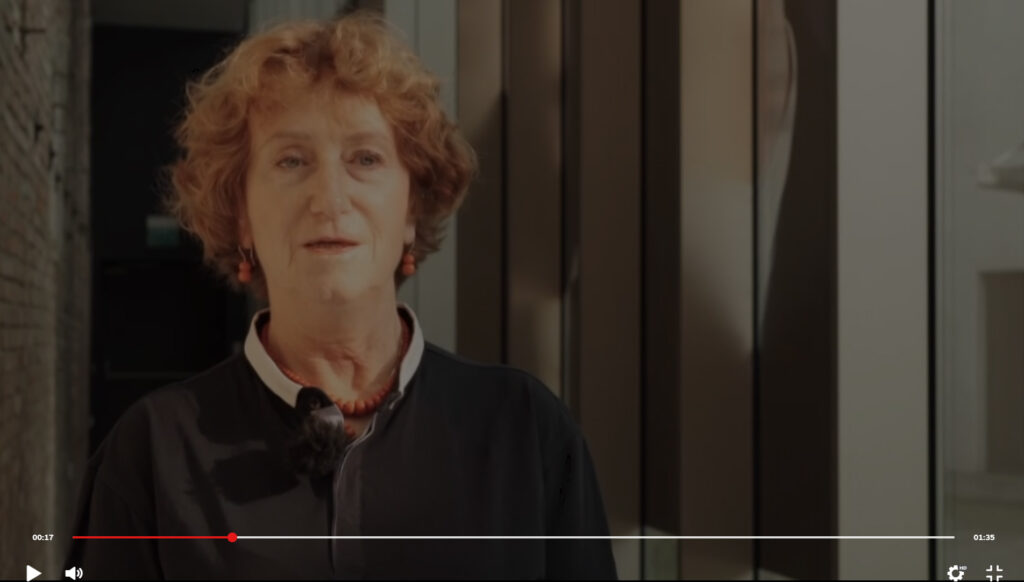The first joint exhibition of the MOCAK and the Center for Persecuted Arts was Poland – Israel – Germany. The Experience of Auschwitz, which took place in 2015. It picked up on and continued the inaugural exhibition of the Center for Persecuted Arts, which was shown in the German Bundestag in January 2015 on the occasion of the seventieth anniversary of the liberation of the Auschwitz concentration camp. The theme was the interconnection between three people: In Theresienstadt, Peter Kien taught twelve-year-old Yehuda Bacon how to draw. Both came to Auschwitz; Kien died, but Bacon survived, went to Jerusalem, and became an artist and teacher at the Bezalel Academy. There, he taught Sigalit Landau drawing. Today, Landau is one of the most influential contemporary artists in the world.
Kien, Bacon, and Landau are linked by the catastrophe of the last century, the Shoah. It is the core of their art.
As a survivor of the Shoah, Yehuda Bacon felt a responsibility to tell his story. He decided to become an artist, also to process his experiences. This was used as evidence in trials against Nazi criminals, such as the Frankfurt Auschwitz trials.

„I wanted to memorize everything I saw, from the very beginning, even if I did not believe that I would ever get out of the concentration camp.
Everyone was completely alone. Friendship was almost impossible, only if you happened to know someone very well or if someone was a relative. And now there was a group of children, former children. We were wonderfully organized; we had already been together in Theresienstadt. We helped each other, shared our last piece of bread […]. That does not exist here. Between the others. We thus had a better chance to survive. […]
The first period of time after liberation. How do you live? How do you give meaning to it?
I came out of the concentration camp, and a little boy, and I can now throw a stone at them. But then another thought came to me: What happens then? What happens then? The ashes of Wisla, of Auschwitz—my father will not suddenly be there. He will not rise from the ashes. That is nonsense. What can you do? And what will happen when I throw the stone. Maybe the person is not guilty at all. And even if they are, I’ll pass the hate on. Is there something solved by that? Nothing. […]
There are always some excuses. But the question is: Did I do what I could do? Did I at least try? Everyone has to try to do what they can, and they really have to do this with open hearts.“
– Interview with Yehuda Bacon for „Auschwitz and I – Art and Remembering“
As the fourth artist with works on view in the German Bundestag, the Israeli caricaturist Michel Kichka, successor of Yehuda Bacon in the art academy, presented his graphic novel Second Generation. It sensitively depicts the traumatization of the survivors’ children and grandchildren. German public television, represented by and under the leadership of the northern German broadcaster Norddeutscher Rundfunk, accompanied the exhibition in the Bundestag with the tri-medial project Auschwitz and I, initiated by Patricia Schlesinger. In addition to the extensive radio, Internet, and television program, the project also included an appeal for donations for the didactic program of the Auschwitz-Birkenau State Museum. In 2015, the collected money was handed over to the memorial foundation during an event at the MOCAK.
„When it comes to anti-Semitism, racism, xenophobia and intolerance, everyone must make it clear wherever they stand: ‘Not with me! Never again! It must not happen again in this country.’ This also means uncovering where something like this occurs in this society, pointing it out, analyzing it, denouncing it under certain circumstances and also prosecuting it. In plain language, this means: We have to defend ourselves and also resist the beginnings.”
– Patricia Schlesinger, former director of the rbb
The Bundestag project traveled on to the MOCAK in Kraków, where it was on view from May 15 to October 31 and illustrated how differently Auschwitz is viewed as a site of the Holocaust from the perspectives of Poles, Israelis, and Germans. An intensive discussion arose around several contemporary works.

„History has led us to shift all the responsibility onto the Nazis. ‘Oh, the Nazis did that; we’re all good.’ And this is the great warning: We must remember that what happened is part of us, part of all of us, part of European culture, part of the religions of Europe.“
– Maria Anna Potocka, Director of the Museum of Contemporary Art in Krakow (MOCAK) in an interview for „Auschwitz and I – Art and Remembering“
